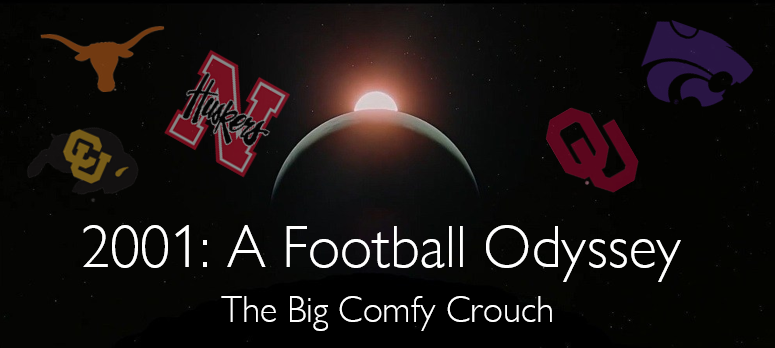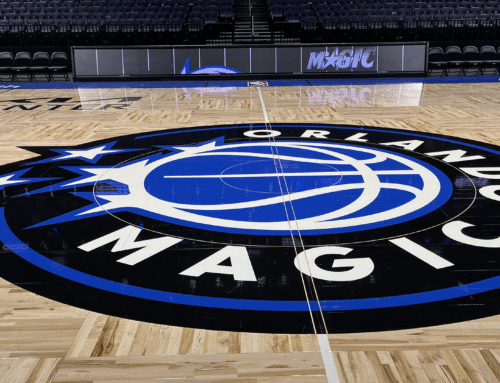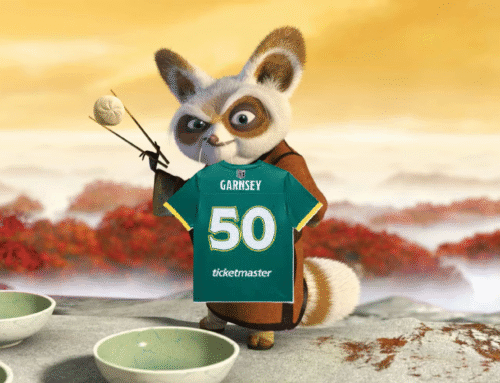Welcome back to the Odyssey. As always, you can click here to read all parts of the journey covered so far. Last time, we took a look at the 2001 Pac-10 season. Today, we’re going to take a look at the 2001 Big 12 season. This conference has many heavy hitters; with defending National Champions, an emerging Texas, and a dying dynasty in Nebraska.
Act I: Big Game Bob
We have talked on multiple occasions about the controversy between Florida State and Miami for the #2 spot in the BCS rankings in the 2000 season. The other team, and the eventual National Champion, was Oklahoma. Oklahoma had been struggling ever since their NCAA allegations and subsequent resignation of Barry Switzer. They hadn’t won double digit games since their 80s heyday. They hadn’t had a winning season since 1993. However, in Bob Stoops’ second season, the Sooners put it all together to win the Big 12 for the first time, and eventually win the National Championship.
In order to get there, Oklahoma had to survive the gauntlet of playing Texas in the Cotton Bowl, going to Kansas State, and #1 Nebraska at home. All four of those teams were looking to be battling for the Big 12 Title and also for a spot in the National Championship. Oklahoma, Nebraska, and Texas were ranked in the top five going into the season, with Kansas State at #13. Oklahoma was losing some players, but remained dominant on defense. Texas and Nebraska brought back most of their teams, including their QBs (Chris Simms and Eric Crouch respectively). This conference looked like it was going to turn on a handful of key matchups.
Act II: Hunter Becomes the Hunted
All four teams at the top met their early hype. Texas easily took care of New Mexico State, North Carolina, Houston, and Texas Tech in September. Nebraska eased by TCU and Troy State before a road clash with Notre Dame (the less said about that the better). They then took out Rice and Missouri to end their September unblemished. Kansas State had the least amount of games in the month of September, escaping with a road win at USC and shutting out New Mexico State, all before their matchup with the defending National Champions.
As mentioned in the first post of the series, Oklahoma took care of North Carolina in the “Week 0” game in their defense of the National Championship. They then made quick work of Air Force on the road and North Texas in Norman. This led to the Sooners’ first test of the season; a home visit from Kansas State and the College Gameday crew. It is worth noting that this is the first Gameday trip for ESPN since the September 11th attacks (which in itself is odd since they could have waited to go to OU-Texas the next weekend but I digress).
Early on, you could tell that the offenses had not truly been tested by top tier competition. Oklahoma and Kansas State exchanged three and outs where neither team got any traction in the rushing game. Oklahoma’s offense continued to struggle as new starting QB Nate Hybl threw an interception to KState’s Terrence Newman down the left sideline. The OU defense immediately responded. Wildcat QB Ell Roberson, in his third career start, fumbled the ball after the OU pass rush got through, and standout safety Roy Williams scooped the ball up and scored to give OU the early 7-0 lead.
The Kansas State offense continued to struggle after the faux pas, doubling their offensive output from 1 yard to 2 yards, before punting the ball back to Oklahoma. Hybl turned his day around by hitting Antwone Savage for a 63 yard score to double the OU lead. The defenses continued to tighten up at the end of the first quarter, leading to consecutive punts. As the second quarter started, Roberson found his feet and started to hit intermediate passes down the field. His key play was a 23 yard pass on 3rd and 24 to get KState within close range to convert the 4th down. The Wildcats would punch it in with Josh Scobey to get on the board and cut the deficit.
This appeared to get both offenses on track. Hybl and Oklahoma went down the field and scored quickly, mostly through the dynamic play of RB Quentin Griffin. Griffin caught a 47 yard pass down the seam and finished the drive with a six yard TD run to re-establish the two touchdown lead. Kansas State struck back just as quickly. After two plays for no gain, Roberson hit WR Brandon Clark for a 58 yard gain to put the Wildcats in scoring position. On the next play, Roberson called his own number to score and bring the KState deficit back down to seven.
Things settled back down again between the two teams, as the rest of the second quarter was a battle for field position. The game turned for the Sooners on a 4th and 3 call on the K-State’s 33 yard line. They lined up to punt (dumb on its’ face but it was 2001), but snapped the ball to the Hunter Wall, who is the backup QB and up man in this formation. He lateralled it to Savage, who was lined up as a gunner. Savage threw it back to Wall, who followed his wall of blockers into the end zone to increase the OU lead. Roberson threw an interception before the end of the half, but Oklahoma could not capitalize heading into the break.
The two defenses clearly adjusted at halftime. Both teams struggled to move beyond their own 35 on the first couple of possessions of the half. Then Hybl hit Savage on a corner route. Savage took it the rest of the way to give Oklahoma a 35-14 lead. This extended deficit put Roberson and the Wildcat offense into high gear. Roberson and fullback were the entirety of the offense as the Wildcats quickly rushed down the field to score a TD and get within two scores.
Kansas State was then gifted an arm punt from Hybl, which was taken by Jon McGraw. He then returned it 33 yards to the OU 17. Roberson and Josh Scobey were the combo to unlock the Wildcat offense on this drive, with Roberson punching it in. However the extra point was missed, making the score 35-27 Oklahoma.
Once again, the Oklahoma offense failed to get anything going on their subsequent drive, and punted back to the Wildcats. The Sooner defense, which had to be tired at this point, found their second wind as the Wildcats looked to cross midfield and forced a punt of their own. Newman got his hands on the ball on the ensuing Oklahoma possession, but the offense could not muster anything and forced the Oklahoma offense back to their own 15.
From there, Oklahoma took five minutes down the clock, converting three third downs on the drive, and getting a field goal. Kansas State had to move fast if they wanted to get back into the game. They had some penalty issues that stalled their drive temporarily, but Roberson hit Ricky Lloyd on a 57 yard TD. Roberson then hit Lockett for a 2 point conversion to make it a 3 point game.
Instead of going for an onside kick, Bill Snyder decided to kick it deep and rely on his defense (and potentially a turnover) to get the ball back for Kansas State. However, they failed to do so initially. On fourth down, OU decided to take the safety to decrease the lead to 38-37. They kicked the ball out of bounds on the ensuing kickoff. Kansas State had a chance for a Hail Mary, but Roberson’s effort fell short and OU survived the comeback, and kept their defense strong.
Texas, as mentioned at the top, was cruising into their annual matchup with Oklahoma. They rode their offense into the Cotton Bowl, led by their junior QB Chris Simms. He had thrown for over 880 yards, threw 6 TDs in their first four games. He also added 3 rushing TDs, leading the offense to 45 points per game. This appeared to be a coming out party for the QB; high profile game, solid seasonal stats, and a rivalry game to boot. The OU defense was standing in his way.
However, the defenses set the tone for the game early on. The longest play in the first quarter was on an OU interception return by Andre Woolfork. He returned the ball 29 yards to the Texas 23 yard line. However, the offensive woes would blend into the special teams for Oklahoma. Tim Duncan, a name associated with reliability on the court, was not reliable in the Cotton Bowl as he sliced a 42 yard attempt. The game remained scoreless after one quarter.
Both teams continued to trade punts in a battle of field position. The special teams woes bled over to the burnt orange faction, as well. Woolfork got involved in the special teams, blocking a 35 yard attempt. Roy Williams would return the block down to their own 39 yard line. On the ensuing drive, the Sooners offense was altered on a 3rd and 10 conversion. Josh Hybl landed hard on his left shoulder on the release of his pass to Mark Clayton, and was knocked out of the game. The offense was now reliant on redshirt sophomore Jason White.
The Sooner offense opened up with White under center, as he hit Clayton down the field and used Quentin Griffin in the backfield to move the Sooners into the Texas red zone. White then used his legs (on a read option) to get the Sooners inside the five. Griffin would punch it in on the speed option and the Sooners got the first score of the game with 6 minutes left in the half.
Simms and the Longhorns offense attempted to respond to the OU score. Their offense found some relative stride as Simms hit Brock Edwards, Bo Scaife, and Tony Jeffrey to get down the field. Running back Ivan Williams help get down to the OU 10 yard line. Unfortunately for the Longhorns, the drive stalled and the halftime clock was ticking down. The Longhorns settled for a FG, and went into the locker room trailing 7-3.
The second half, much like the first, began with a string of punts. There were six punts in total and neither team reached the 50 in any of those possessions. Finally, as the third quarter turned into the fourth, OU got some offensive traction. The Sooners drove deep into Texas territory, getting to the Longhorn 8. However, Duncan approached a FG from the far hash and once again sliced, keeping the OU lead to 4.
Despite being backed up, Simms found some holes in the OU defense for the first time all half. He, along with some gash runs by Williams, got the Longhorns into Sooner territory. However, the Sooner defense stepped up. Simms attempted to hit Texas’ Roy Williams in the end zone, only to have the pass intercepted by Antonio Perkins, stalling the drive.
Oklahoma now had an opportunity to kill some clock and potentially put the game out of reach with eight minutes remaining. White and Griffin killed almost six minutes of game time with their run game and short passes to get down to the Texas 28 yard line. However, instead of attempting another field goal to put their lead to seven; Stoops and Duncan decided to pooch punt. The punt turned out to be successful as Nathan Vasher, instead of letting the punt go into the end zone, fell on the ball on Texas’ own three yard line.
Oklahoma would end the game on the very next play. OU’s Roy Williams, in a play that would be on highlight reels forever, leaps over Ivan Williams on a blitz, knocks the ball out of Simms’ hand, and Teddy Lehman snatched the ball out of the air and walked into the end zone, putting the game out of reach for Texas. The ensuing drive Simms would through his fourth interception, and OU would run out the clock.
Oklahoma had once again asserted itself as the Big 12 South champion, but also a Big 12 champion, and National Champion. Texas now had it’s goals for the season get diminished. The margin of error to win the conference and submit themselves as a national threat were now down to zero. Plus, losing the tiebreaker to OU at head to head they needed help along the way. But they first had to deal with the rest of their schedule.
Act III: Between A Boulder and A Hard Place
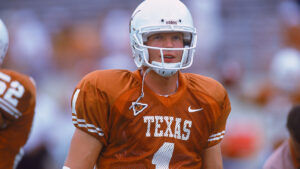
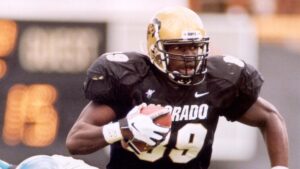
Nebraska, by virtue of continuing to beat up on their Big 12 schedule, remained top dog in the North. With their games against Kansas State and Colorado the last two games of their regular season, the showdown between the next two teams was critical for the Wildcats and Buffaloes. Plus, with Kansas State already dropping a conference game against Oklahoma the week prior , their conference hopes rested solely in winning out.
Colorado, having already dropped their opener against Fresno State, had yet to do anything special to set themselves ahead of Kansas State, only winning a home game against Kansas in conference. Their brief moment of dominance came immediately after their loss to Fresno State, knocking off then #24 ranked Colorado State 41-14. Their other game, prior to their trip to Manhattan, was a 51-15 shellacking at home against San Jose State.
The two defenses won the battles in the first possessions for the two teams, with Kansas State only briefly getting over midfield. Colorado seemed to key in on Ell Roberson’s rushing ability, stacking the box for him on the opening drive to clog the rushing lanes. The Colorado offense, led by QB Craig Ochs using his arms and legs, marched down the field. His last pass, a fantastic catch by TE Daniel Graham, put Colorado on the board, leading 7-0.
On the ensuing drive, Roberson and the K-State offense adjusted. With Colorado seemingly taking away the run game, Roberson was going to have to beat the Buffs over the top. He some moderate success, getting the Wildcats down to the Colorado 34 yard line. However, a sack and an incompletion stalled the drive. Kansas State then went on and missed the ensuing field goal attempt, keeping the deficit of a touchdown.
However, Colorado could not capitalize on the miscue. Ochs, on the second play of the drive, threw an interception, putting Kansas State back in business on the Colorado 42. Roberson and the Wildcats would end up giving the ball right back to the Buffs. Roberson underthrew a screen pass under pressure and was intercepted as well. The two teams would continue to play the field position game, the only mistake being another Roberson interception. The halftime score in the Little Apple remained Colorado 7, Kansas State 0.
The second half did not start off well for the Wildcats. As Roberson and the offense stalled, the Wildcats punter Travis Brown fumbled the snap and was tackled well short of the first down. The Buffs got a field goal after getting the great field position, extending their lead. Kansas State continued to struggle and the Colorado offense found its groove. Ochs hit Graham to get down inside the K-State nine yard line. The offense stalled and Colorado hit another field goal to extend their lead to 13-0.
Then, the offenses began to stall going into the fourth quarter. The Wildcats punted twice with a missed FG in the middle of the punts. Colorado had a more adventurous time with the ball. They fumbled the ball, turned the ball over on downs, and then Ochs threw an interception, giving Kansas State a chance in Colorado territory. Kansas State, with help from two fourth down conversions, Kansas State scored their first TD of the game. However, their special teams woes continued as Mike Ronsick missed the extra point, keeping the deficit down to a touchdown.
After forcing a punt, Kansas State now had the ball, with six minutes left, to climb back into the game and keep its Big 12 hopes alive. A sack to Roberson on first down set back the Wildcats offense, forcing them to punt the ball as well. The final special teams mistake was the coverage on the ensuing punt. Roman Hollowell took the punt down the middle and down the left sideline to the Kansas State six yard line. Colorado ran some clock before ultimately kicking a field goal, giving the Buffs a two possession lead. Kansas State could not close the gap, ending the game with a ball knocked down in the end zone.
Colorado, between this result and the subsequent win over Texas A&M at home, put Colorado back into the top 15 of the polls, put Colorado firmly behind Nebraska in the Big 12 North Standings, and gave the Buffs and outside shot at the National Championship. Kansas State, meanwhile, would unravel after the consecutive losses. They dropped two more games in a row; at Texas Tech and home against A&M, falling out of the Top 25 for the rest of the season.
The next week Colorado would have its’ biggest test to date, going into Austin to take on the Longhorns. Texas, fresh off of their loss in the Cotton Bowl, went to Stillwater and shellacked the Cowboys 45-17. The game against the Buffaloes, with the possible exception of the their rivalry game with Texas A&M, appeared to be the final test for the Longhorns this season. If they win this game, winning out the rest of their schedule seemed doable and put the pressure on the Sooners to not lose two games.
Texas made sure to make their point early. They were here, and despite the loss to OU, they were for real. The Longhorns defense forced a punt on their opening drive. Then, Chris Simms marched his offense down the field. He finally hit Roy Williams for a three yard TD to put the Longhorns up 7-0. Colorado struggled once getting the ball back. The Buffs fumbled twice in three possessions, with a missed field goal sandwiched in between those possessions. The second fumble came deep in their own territory and Texas responded with a field goal of their own to extend their lead.
Colorado found its groove offensively on the next possession, leaning on their running game to get into the end zone. However, the next Colorado possession was a harbinger for the rest of the game. Daniel Graham caught a ball over the middle, had it knocked out of his hands past the first down marker, and Texas recovered the ball. Cedric Benson took over, making his presence felt on the afternoon. His rushing TD pushed the Longhorn lead to ten. Benson added another rushing TD, after taking a shovel pass 40 yards down into Colorado territory, extending the Texas lead, going into the half.
Colorado, now down three scores, needed to put their offense into a hurry up mode to try and make up some ground after their first half turnovers. However, on their first drive, running back Corten Johnson was stuffed on a 4th and 1 attempt. Texas took the ball back and immediately marched down the field. A healthy dose of Benson combined with the lethal aerial attack led to success for the Longhorns. Simms hit Sloan Thomas in the end zone to put Texas up 31-7.
Colorado’s offense could never get off the ground the rest of the way. Their offense never was on the field for more than three plays the rest of the way. Texas added another Simms passing TD and a field goal, cruising to a 41-7 victory. Colorado, taking their first conference loss, now needed to win out to get to the Big 12 Championship. Their National Championship hopes now seemed dashed with a second loss. Texas had an easy road to the end of their season. The teams Colorado and Texas needed to pass were due for a major collision a week after the Longhorns victory.
Act IV: Black 41 Flash Reverse Pass
Nebraska, the same day as Texas was clobbering Colorado, had their first true test of the season. Seemingly looking ahead to Oklahoma, Nebraska was in a close game in Lubbock. The game was tied going into the half, but Nebraska used their offense and blackshirt defense to shut down the Red Raiders offense in the second half, cruising to a ten point win. It was the closest victory for the Huskers all season long, and the brief test with adversity was important for them. The next week they were hosting the #2 Oklahoma Sooners, now winners of 20 straight games.
The day after the Nebraska win over Texas Tech, the first BCS Standings were unveiled. The defending champions in Norman were #1. The Huskers were #2. The situation was eerily similar to the season prior, where Nebraska was the first BCS #1, with OU #2. In that contest, Oklahoma overcame a 14-0 first quarter deficit to score 31 unanswered points, punctuated by a interception of Crouch returned back for a TD. College Gameday was in town for Lincoln to see what this year’s result would be and how it would affect the National Championship picture.
On the first drive, Nebraska was swallowed up by the Oklahoma defense, not being able to get any traction on the running game, leading to a punt. The Nebraska offense would get a second chance at a first impression. Jason White, who won the job from Hybl for the week, threw an interception to Keyou Carver. However, despite the good field position, the Huskers offense could not move the ball once again and punted back to Oklahoma. The rest of the first quarter belonged to the defenses, as neither offense got into serious scoring territory, keeping the game 0-0 after one.
On the first full drive of the second quarter, Oklahoma used success on the ground with Quentin Griffin, the Oklahoma offense was humming. However, things were altered as White rolled out to the near sideline. He threw the ball to Griffin and tore his ACL in the process. Nate Hybl would come in relief to keep the offense going. After a pass interference call, Hyble hit Trent Smith to give Oklahoma the first score of the game.
Led by QB Eric Crouch, Nebraska found some rhythm in its offense. With Oklahoma shutting down the option, Crouch took matters into his own hands by slinging the ball down the field. Crouch threw for 58 yards on that drive alone. Finally, Dahrran Diedrick finished the drive with a touchdown from two yards out, tying the game at seven. Oklahoma went three and out on their next possession. On the punt, DeJuan Groce penetrated the punt coverage to put the Huskers deep into Sooner territory. Nebraska got a field goal on the drive, taking their first lead of the ballgame. Oklahoma, with 2:30 left, drove down the field off Hybl’s arm. However, the Nebraska defense held inside their own 5. Oklahoma kicked a field goal to tie the game at the half.
(It’s worth noting that Oklahoma tried an end around reverse pass to their Quarterback on this possession. It would have given Hybl and OU an easy TD. We’ll get back to that later.)
The beginning of the second half did not build off of the offensive momentum Oklahoma had. After a successful Hybl run, a deflected pass was intercepted, putting the Huskers offense back on the field. Thunder Collins, on an end around, put the Huskers deep into Sooner territory. Combined with a Diedrick run, the Huskers were soon inside the Oklahoma 10. Unfortunately for the Huskers, the Sooners offense returned the goal line stand and Nebraska hit a field goal to take the lead back.
The rest of the third quarter was a battle of attrition, with both teams alternating punts going into the fourth quarter. Neither team crossed midfield until Oklahoma did so with less than eleven minutes left. After consecutive completions by Hybl to Josh Norman (no not that one) and Mark Clayton, the OU offense stalled and were forced to punt back to Nebraska. The punt was downed inside the five yard line, which brought immediate comparisons to the play Roy Williams made against Texas. The ensuing drive would have a memorable play, but not in the way the OU defense intended.
Crouch got his team out of the danger zone by calling his own number and running for 19 yards. Diedrick would add eight more yards on the ground. On a third and 2, Crouch got an inadvertent face mask call to give Nebraska the first down. Then came the call that has lived on in Nebraska lore. Black 41 Flash Reverse Pass. Crouch handed the ball off on the jet sweep to Collins, who handed it back to WR Mike Stuntz. The lefty hit Crouch in stride as he outran the linebacker in coverage to take the catch 63 yard catch and run to the house, extending their lead to 10.
On the ensuing drive, the Oklahoma offense stalled out around midfield. With four minutes left, the Sooners needed their defense to make a play to get back into the game. Nebraska killed some clock with some quick run plays to give Oklahoma as little clock to work with as possible. The Sooners attempted to block the punt, and just missed doing so. The Nebraska defense, due to their unrelenting blitzes, forced a turnover on downs and the game was over. Nebraska snapped Oklahoma’s winning streak and were going to be #1 the following morning.
Act V: The King in the North
Despite the loss for the Sooners, their effort in the game left them as the #3 team in the country, per the BCS rankings. The rematch was still in the cards, as mentioned during the top of the broadcast. Oklahoma had four games to go left in their season before a potential Big 12 Championship Game. The Sooners easily took care of Tulsa the week after the loss in Lincoln. Then, the defending champs took out conference foes Texas Tech and Texas A&M in easy fashion. The only team that stood in their way between them and a trip to Dallas for the Big 12 title was their rivals in Stillwater.
On the other side of the conference, Nebraska was firmly in the driver’s seat for the North. They would make quick work of Kansas, before pulling ahead of Kansas State. Their rivals in Boulder stood in the way between the Huskers and a Big 12 Championship and potential National Championship appearance. Colorado, since their loss to Texas, had a close call against Oklahoma State and two two score wins over Missouri and Iowa State. The game against Nebraska now became a de facto Big 12 North Championship Game.
And that’s where we will be heading next time on the Odyssey. The 2001 Nebraska Colorado Big 12 North Championship Game. Until then, leave your comments below on all things 2001 Big 12.

